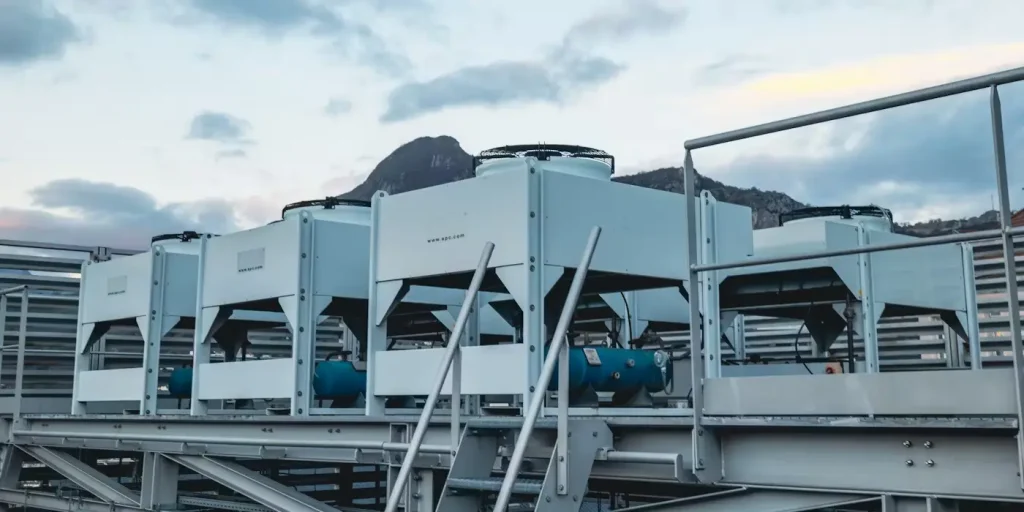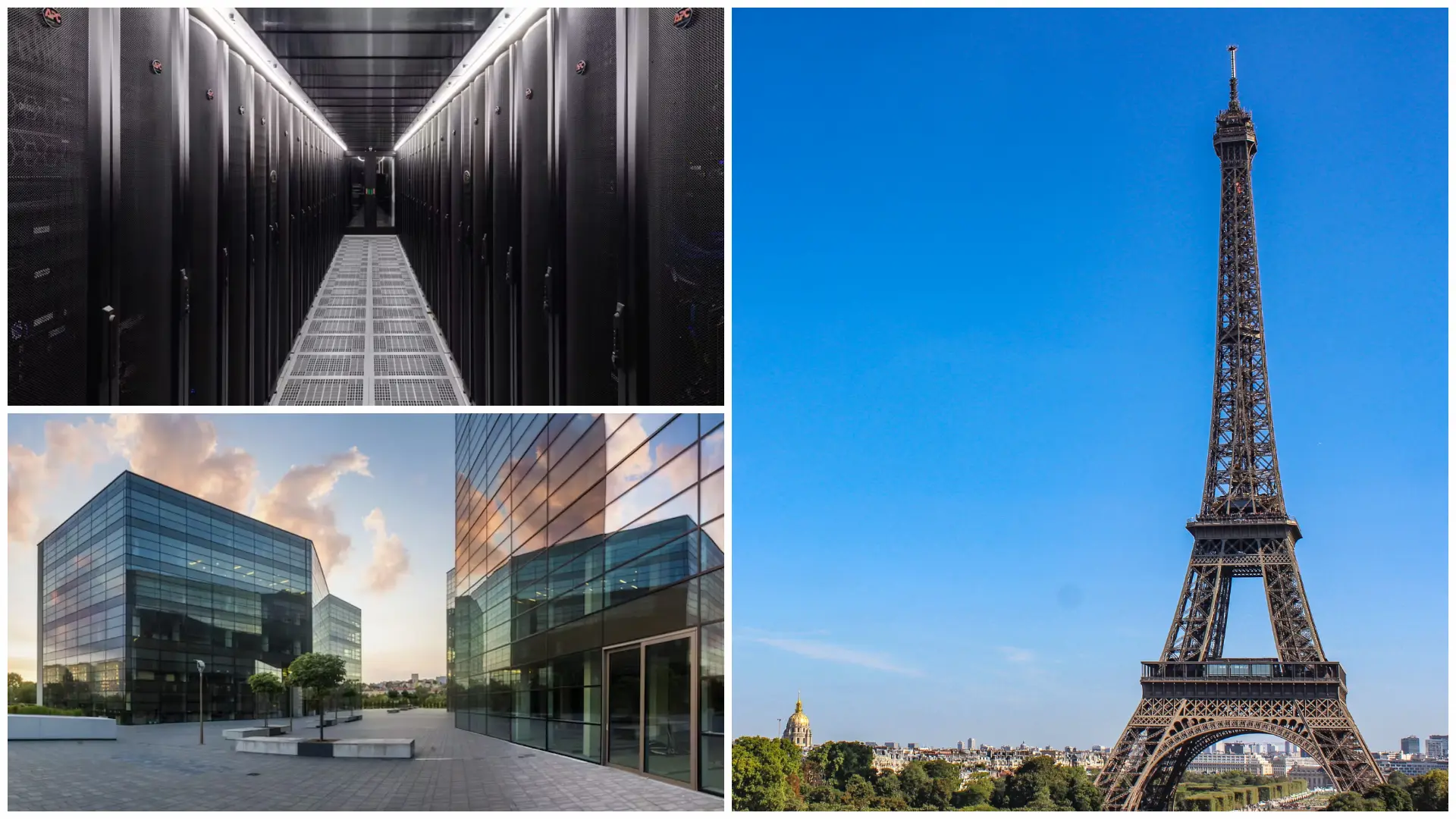We are opening a new availability zone in Paris to bring low-latency virtual machines and cloud servers closer to your users in France. The region is tuned for real workloads that care about predictable performance, clean networking and a clear compliance story. You get KVM-based isolation, NVMe-backed storage, unmetered bandwidth, dedicated IPv4, private networking, full root or SSH access, optional snapshots and backups, plus a 30-day money-back guarantee. If you want to try it now, deploy a Paris VPS directly from your dashboard.
This launch focuses on two plan families that cover most production needs without overcomplication: Starter VPS and Performance VPS. GPU and Storage plans will be added later once we finish capacity planning and routing tests for those profiles in the Paris metro.
What this region is built for
Paris is for teams that want EU data residency, consistent tail latency and a platform that stays out of the way. That means web apps that burst during traffic spikes, APIs that need low jitter, CI runners, databases that care about p95 read times, small Kubernetes clusters, self-hosted services and trading or automation stacks where time-to-first-byte matters.
The design goal is simple: keep the fast paths short and the failure domains small. That starts with the facility layer, continues through power and cooling, then up through network routing and storage queueing. The net effect is less variance under mixed load and fewer surprises when you push new code.
Location and facility details

Hosted in Vélizy-Villacoublay at DC2SCALE PAR3
The new zone lives inside DC2SCALE’s Vélizy Latécoère PAR3 datacenter south-west of Paris. The site offers approximately 600 m² of IT room capacity within a 1,200 m² campus footprint and is engineered to a Tier 3 design with redundancy on the critical paths. You get electrical and cooling resiliency that supports steady-state operations plus maintenance windows without downtime.
Power and cooling topology
Power entry arrives on dual 1.5 MVA feeds split to separate main boards. UPS strings ride each path with generator support and a provision for mobile gensets in case the grid has a prolonged incident. Cooling blends direct free-cooling with dual chilled-water loops that feed CRAC cabinets in a 2N configuration. Four units handle full-load operation and two sit hot as backup, which is exactly what you want during long heat events. Cold aisle containment and airflow management keep inlet temperatures narrow so CPUs can stay boosted without thermal downshifts.

Physical security and access control
Access is gated by a single-person mantrap with biometric control. The site is monitored 24-7, and interior and exterior zones are covered by infrared cameras with night capability and motion detection. That matters for audit trails and incident response, but it also reduces the number of hands near your racks which is the point of good physical security.
Network carriers and peering
There are multiple on-site operators for diverse uplinks. Paris peers into national backbones with short metro routes, which helps with jitter and packet loss during busy hours. For internal architectures, private networking lets you keep east-west flows off the public edge so firewalls can be stricter at the perimeter and simpler inside the application mesh.
Performance architecture in practice
Compute isolation
Virtual machines run with clean KVM isolation. That keeps bursty jobs from collapsing neighbors and avoids the micro-stalls you sometimes see with noisy-host setups. CPU scheduling is configured for steady clocks over time instead of marketing peaks. If you are running GC-heavy runtimes like Java or Node, you will notice steadier pause times during traffic ramps.
Storage pipeline
NVMe-backed storage reduces tail read latency and speeds up small-block random IO which drives package managers, dependency solvers and database reads. That is why deploys warm up faster and why p95 query times shrink when working sets stop fighting for rotational seeks. Queue depth and IO scheduler settings are tuned for mixed read-write workloads so you do not have to hand-tune device parameters for common cases.
Network behavior
Latency is not a single number. What you feel is the envelope. In Paris we optimize for a tight p95 and p99, not just a pretty median. That shows up in faster first-byte times for dynamic pages and less jitter in WebSocket sessions. If you segment tiers over private networking, you can pin security groups to internal ranges and keep public listeners minimal which cuts attack surface and simplifies audit scopes.

Plans available in Paris
Starter cloud VPS
Starter is the lightweight slice that many teams use for small APIs, bots, web workers, status pages, collectors, or staging nodes. You get NVMe performance, unmetered bandwidth, IPv4 by default, full root or SSH access, and the same DDoS baseline as larger plans. It is a cheap way to push compute close to users and still keep room to scale horizontally when a service takes off.
Performance VPS
Performance is the workhorse profile for production. It follows a 1:4 CPU-to-RAM ratio to keep runtimes comfortable and includes an automatic backup to reduce the blast radius around deploys. If you need Windows for RDP or .NET services there is a pre-installed evaluation template to get you from zero to desktop quickly. These instances are a good fit for app servers, queues, cache layers and medium databases that need predictable IO.
What both profiles include
- Unmetered bandwidth with fair-use enforcement
- Dedicated IPv4 and full root or SSH access
- Always-on DDoS mitigation and a configurable firewall per instance
- Private networking for internal east-west flows
- Optional snapshots and scheduled backups
- 24-7 in-house support with French language available
- 30-day money-back guarantee so you can test under real workload
Security, compliance and data residency
LumaDock is a European-operated platform that treats privacy and sovereignty as design inputs, not add-ons. Our information security management system aligns to ISO 27001 controls, and our operational playbooks favor least privilege, immutable logs and change control that can be shown during audits. The Paris region helps French teams that need clear EU jurisdiction under GDPR. If you handle personal data, keep your virtual machines, block storage, snapshots and backups in Paris so data residency is not a debate during vendor reviews.
Developer experience
Control panel that stays out of your way
Provisioning is lightweight and predictable. Create a VM, choose an image, set your SSH keys, and you are done. Snapshots before big changes give you a fast rollback path. Firewalls are applied per instance with rules you can audit at a glance. Private networking is point-and-click, which lowers the friction to segment your tiers correctly from day one.
Observability and housekeeping
Bring your own agents for metrics and logs or keep things simple with system exporters and journal shipping. Because IO is NVMe-backed, ingest spikes have a smaller effect on application reads. If you want to be thorough, configure separate volumes for logs to avoid noisy neighbor effects inside the guest OS.
Sizing and benchmarking guidance
Do a quick baseline before you migrate. Measure your current p50, p95 and p99 for CPU, memory, storage and network. Then pick a target instance with at least 30 percent headroom so deploy day does not become tuning day. Verify with small tools you can run repeatably:
fiofor random read and write profiles that match your applicationiperf3for end-to-end throughput tests between app and DB nodes over private networkingdigordrillto check DNS resolution times from inside the regionwrkork6to validate your API latency envelope under realistic concurrency
If you run Postgres or MySQL, keep the page cache healthy and monitor evictions during traffic bursts. For JVM services, watch GC pauses during warmup and check that CPU steal stays near zero under steady traffic.
Reference topologies for Paris
Two-tier SaaS with a single database
Use two Performance instances behind a reverse proxy for the app layer and one Performance instance for the database on private networking. Keep admin panels behind IP allow lists. Schedule nightly backups and snapshot before each release. This is a simple pattern, yet it satisfies many internal compliance checks because the DB never faces the public edge.
API with bursty traffic
Shape traffic with a lightweight queue and autoscale a pool of Starter workers. Put Redis or a similar cache on a Performance node. Keep secrets in environment-specific vaults, not in images. Because Paris sits close to end users in Île-de-France, your p95s should tighten immediately if you had been serving French users from abroad.
CI runners near developers
Place a small pool of Starter instances near your engineers to cut pull times and reduce round trips on package fetches. Keep artifacts on a Performance instance and pin runner subnets with firewall rules. You will notice fewer pipeline timeouts and fewer false negatives due to network variance.
Migration checklist
- Inventory services, dependencies and ports. Remove anything you do not want to carry forward.
- Snapshot your current environment. Test restore on a non-production VM.
- Deploy the Paris target with 30 percent headroom. Rehearse a cutover on a staging domain.
- Move DNS with a short TTL. Keep the old stack warm until error rates fall back to baseline.
- Verify backups and alerts. Document the change for your audit trail.
Pricing, guarantees and support
Pricing is transparent and in USD across regions. You get unmetered bandwidth on fair use, IPv4 by default, full root or SSH access and the same DDoS posture everywhere. The 30-day money-back guarantee applies to Paris so you can run real tests without risk. Support is 24-7, handled in-house by engineers who know the platform and can assist in French.
FAQ
Are GPU or Storage plans available in Paris?
Not yet. The Paris launch covers Starter and Performance plans. GPU and Storage profiles are planned once capacity and routing validations are complete.
Is Windows available?
Yes. Performance plans offer a pre-installed Windows evaluation template suitable for RDP sessions and .NET services.
Is pricing different in Paris?
No. Pricing remains consistent across regions with amounts listed in USD.
How do I keep data in France?
Deploy your virtual machines in Paris and keep block storage, snapshots and backups in the same region. Use private networking between tiers so internal traffic does not traverse the public edge.
Can I migrate from another region?
Yes. The simplest pattern is snapshot and rebuild. If you need help our team can guide the process or provide a structured runbook.
What is next for the region
This is a first step. We will continue to add capacity, expand carrier options and introduce additional plan families as demand grows. If you need a feature that would make Paris perfect for your workload, tell us. The roadmap is driven by real use cases, not slideware. Au revoir!

